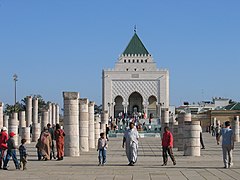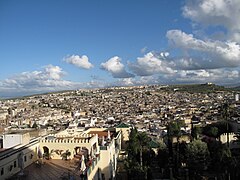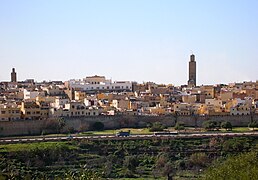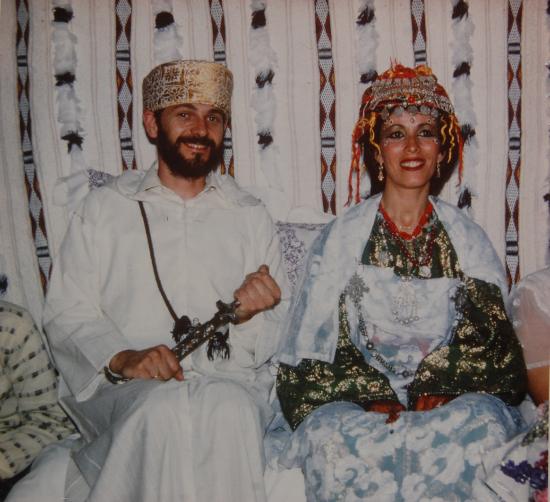8.5: Culture
- Page ID
- 151352
\( \newcommand{\vecs}[1]{\overset { \scriptstyle \rightharpoonup} {\mathbf{#1}} } \)
\( \newcommand{\vecd}[1]{\overset{-\!-\!\rightharpoonup}{\vphantom{a}\smash {#1}}} \)
\( \newcommand{\dsum}{\displaystyle\sum\limits} \)
\( \newcommand{\dint}{\displaystyle\int\limits} \)
\( \newcommand{\dlim}{\displaystyle\lim\limits} \)
\( \newcommand{\id}{\mathrm{id}}\) \( \newcommand{\Span}{\mathrm{span}}\)
( \newcommand{\kernel}{\mathrm{null}\,}\) \( \newcommand{\range}{\mathrm{range}\,}\)
\( \newcommand{\RealPart}{\mathrm{Re}}\) \( \newcommand{\ImaginaryPart}{\mathrm{Im}}\)
\( \newcommand{\Argument}{\mathrm{Arg}}\) \( \newcommand{\norm}[1]{\| #1 \|}\)
\( \newcommand{\inner}[2]{\langle #1, #2 \rangle}\)
\( \newcommand{\Span}{\mathrm{span}}\)
\( \newcommand{\id}{\mathrm{id}}\)
\( \newcommand{\Span}{\mathrm{span}}\)
\( \newcommand{\kernel}{\mathrm{null}\,}\)
\( \newcommand{\range}{\mathrm{range}\,}\)
\( \newcommand{\RealPart}{\mathrm{Re}}\)
\( \newcommand{\ImaginaryPart}{\mathrm{Im}}\)
\( \newcommand{\Argument}{\mathrm{Arg}}\)
\( \newcommand{\norm}[1]{\| #1 \|}\)
\( \newcommand{\inner}[2]{\langle #1, #2 \rangle}\)
\( \newcommand{\Span}{\mathrm{span}}\) \( \newcommand{\AA}{\unicode[.8,0]{x212B}}\)
\( \newcommand{\vectorA}[1]{\vec{#1}} % arrow\)
\( \newcommand{\vectorAt}[1]{\vec{\text{#1}}} % arrow\)
\( \newcommand{\vectorB}[1]{\overset { \scriptstyle \rightharpoonup} {\mathbf{#1}} } \)
\( \newcommand{\vectorC}[1]{\textbf{#1}} \)
\( \newcommand{\vectorD}[1]{\overrightarrow{#1}} \)
\( \newcommand{\vectorDt}[1]{\overrightarrow{\text{#1}}} \)
\( \newcommand{\vectE}[1]{\overset{-\!-\!\rightharpoonup}{\vphantom{a}\smash{\mathbf {#1}}}} \)
\( \newcommand{\vecs}[1]{\overset { \scriptstyle \rightharpoonup} {\mathbf{#1}} } \)
\( \newcommand{\vecd}[1]{\overset{-\!-\!\rightharpoonup}{\vphantom{a}\smash {#1}}} \)
\(\newcommand{\avec}{\mathbf a}\) \(\newcommand{\bvec}{\mathbf b}\) \(\newcommand{\cvec}{\mathbf c}\) \(\newcommand{\dvec}{\mathbf d}\) \(\newcommand{\dtil}{\widetilde{\mathbf d}}\) \(\newcommand{\evec}{\mathbf e}\) \(\newcommand{\fvec}{\mathbf f}\) \(\newcommand{\nvec}{\mathbf n}\) \(\newcommand{\pvec}{\mathbf p}\) \(\newcommand{\qvec}{\mathbf q}\) \(\newcommand{\svec}{\mathbf s}\) \(\newcommand{\tvec}{\mathbf t}\) \(\newcommand{\uvec}{\mathbf u}\) \(\newcommand{\vvec}{\mathbf v}\) \(\newcommand{\wvec}{\mathbf w}\) \(\newcommand{\xvec}{\mathbf x}\) \(\newcommand{\yvec}{\mathbf y}\) \(\newcommand{\zvec}{\mathbf z}\) \(\newcommand{\rvec}{\mathbf r}\) \(\newcommand{\mvec}{\mathbf m}\) \(\newcommand{\zerovec}{\mathbf 0}\) \(\newcommand{\onevec}{\mathbf 1}\) \(\newcommand{\real}{\mathbb R}\) \(\newcommand{\twovec}[2]{\left[\begin{array}{r}#1 \\ #2 \end{array}\right]}\) \(\newcommand{\ctwovec}[2]{\left[\begin{array}{c}#1 \\ #2 \end{array}\right]}\) \(\newcommand{\threevec}[3]{\left[\begin{array}{r}#1 \\ #2 \\ #3 \end{array}\right]}\) \(\newcommand{\cthreevec}[3]{\left[\begin{array}{c}#1 \\ #2 \\ #3 \end{array}\right]}\) \(\newcommand{\fourvec}[4]{\left[\begin{array}{r}#1 \\ #2 \\ #3 \\ #4 \end{array}\right]}\) \(\newcommand{\cfourvec}[4]{\left[\begin{array}{c}#1 \\ #2 \\ #3 \\ #4 \end{array}\right]}\) \(\newcommand{\fivevec}[5]{\left[\begin{array}{r}#1 \\ #2 \\ #3 \\ #4 \\ #5 \\ \end{array}\right]}\) \(\newcommand{\cfivevec}[5]{\left[\begin{array}{c}#1 \\ #2 \\ #3 \\ #4 \\ #5 \\ \end{array}\right]}\) \(\newcommand{\mattwo}[4]{\left[\begin{array}{rr}#1 \amp #2 \\ #3 \amp #4 \\ \end{array}\right]}\) \(\newcommand{\laspan}[1]{\text{Span}\{#1\}}\) \(\newcommand{\bcal}{\cal B}\) \(\newcommand{\ccal}{\cal C}\) \(\newcommand{\scal}{\cal S}\) \(\newcommand{\wcal}{\cal W}\) \(\newcommand{\ecal}{\cal E}\) \(\newcommand{\coords}[2]{\left\{#1\right\}_{#2}}\) \(\newcommand{\gray}[1]{\color{gray}{#1}}\) \(\newcommand{\lgray}[1]{\color{lightgray}{#1}}\) \(\newcommand{\rank}{\operatorname{rank}}\) \(\newcommand{\row}{\text{Row}}\) \(\newcommand{\col}{\text{Col}}\) \(\renewcommand{\row}{\text{Row}}\) \(\newcommand{\nul}{\text{Nul}}\) \(\newcommand{\var}{\text{Var}}\) \(\newcommand{\corr}{\text{corr}}\) \(\newcommand{\len}[1]{\left|#1\right|}\) \(\newcommand{\bbar}{\overline{\bvec}}\) \(\newcommand{\bhat}{\widehat{\bvec}}\) \(\newcommand{\bperp}{\bvec^\perp}\) \(\newcommand{\xhat}{\widehat{\xvec}}\) \(\newcommand{\vhat}{\widehat{\vvec}}\) \(\newcommand{\uhat}{\widehat{\uvec}}\) \(\newcommand{\what}{\widehat{\wvec}}\) \(\newcommand{\Sighat}{\widehat{\Sigma}}\) \(\newcommand{\lt}{<}\) \(\newcommand{\gt}{>}\) \(\newcommand{\amp}{&}\) \(\definecolor{fillinmathshade}{gray}{0.9}\)In this section, you will:
- Learn about Morocco, its geographical location, most famous cities, its most famous artifacts, its traditional food and clothes
المملكة المغربية - Kingdom of Morocco
.svg.png?revision=1) Kingdom of Morocco; CC BY-SA 3.0
Kingdom of Morocco; CC BY-SA 3.0Facts to know about Kingdom of Morocco
- Official Name: Kingdom of Morocco- Al- Mamlakah Al-Maghribiyyah- المملكة المغربية
- Capital: Rabat- الرباط
- Population: 37.34 million( 2021)
- Currency: Moroccan Dirham- الدرهم المغربي
- Continent: Africa- أفريقيا
- Official Language: Modern Standard Arabic & The Amazigh Language - اللغة العربية واللغة الأمازيغية
1.1 Geographical Location & Flag
Kingdom of Morocco is a country located in North Africa. It is bordered by the Mediterranean Sea to the north and the Atlantic Ocean to the west, and it shares borders with Algeria to the east and Mauritania to the south. Morocco has a rich history and culture, with influences from a variety of different civilizations, including the Phoenician, Romans, and Arabs. The country is known for its beautiful beaches, vibrant cities, and stunning landscapes, including the Atlas Mountains and the Sahara Desert. The official language of Morocco is Arabic, but French is also widely spoken. Amazigh Language is the other Official Language in morocco. Rabat is the capital of Morocco.
1.2 Most Famous Cities
Morocco are considered the gate to North Africa. There are many amazing cities that are a mixture of African, European and Middle Eastern beautiful culture. some of these charming cities are Casablanca, Rabat, Fes, Marrakesh, and Meknes.
| City Name in English | City Name in Arabic | Pronunciation | Image |
|---|---|---|---|
| Rabat | الرباط | Alribat |

|
| Casablanca | الدار البيضاء | Al daar albaydaa |
.jpg?revision=1&size=bestfit&width=238&height=152)
|
| Fes | فاس | Fas |

|
| Marrakesh | مراكش | Marakish |

|
| Meknes | مكناس | Miknas |

|
1.3 Most Famous Artifacts
Morocco is well known to be home for many ancient cities, historic sites, and stunning places. Some of the amazing historic sites in Morocco are the following:
1. Citadel of Ait Ben-Haddou
The Citadel of Ait Ben-Haddou is located in the south of Moroccan town named Ouarzazate. It has been built in the 11th century and most of the buildings and maze-like streets are from the 17th century. It was an important trading center to connect ancient Sudan with Morocco on Saharan trade route.
2. Hassan Tower
The Hassan Tower in Rabat is a 140-foot red stone minaret that built during the reign of the Almohad Dynasty in 1184AD. It was believed to be one of the largest mosques on earth, but the mosque construction stopped when the sultan died and what was built of the mosque was demolished by an earthquake in 1755.
3. Volubilis
Volubilis is one of the most ancient Roman city near Meknes city that was built in 25BC. The population of Volubilis were a diverse residents including Syrians, Spaniards, Jews, and Africans. Triumphal Arch is one of the most famous Structure of Volubilis which was build for the Roman emperor at his death in 217AD.
4. El Badi Palace
El Badi Palace is considered one of the most spectacular royal palace in the world located in the centre of Marrakesh. it was built in the 16th century by sultan Ahmad al Mansur of the Saadi Dynasty. It took about 25 years to be built. This majestic palace was renowned for its opulence with hundreds of marble columns and intricate carving coverings its walls. However, over time it fell into disrepair and today only ruins remain. despite this, it is still a popular tourist attraction and is a symbol of thecity's rich history.
5. Essaouira
Essaouria is an amazing Moroccan city located on the Atlantic coast of Morocco. the city is influenced by different cultures over the centuries including Phoenician, Romans, and Portuguese. It is a Popular tourist destination with its charming streets, beautiful beaches, and vibrant arts and crafts scene.
1.4 Most Popular Food in Morocco
There are many popular foods in morocco. some of the most well-known dishes includes Couscous, Harrira, Pastilla, and B'stills
| Food in English | Food in Arabic | Ingredients | Image |
|---|---|---|---|
| Couscous | كسكس |
|
|
| Harrira | حريرة |

|
|
| Pastilla | بسطيلة |

|
|
| Tagine | طاجين |

|
|
| Zaalouk | زعلوق |

|
1.5 Traditional Clothing in Morocco
Women Traditional Clothing
Traditional women's clothing in Morocco varies depending on the region, but one common element is the use of bright, colorful fabrics and intricate embroidery. In some areas, women wear dresses or skirts with embroidered tops and headscarves, while in others they may wear long, flowing djellabas- robe like garments- with intricate embroidery and beadwork. these garments are often made form locally-sourced materials such as wool or cotton, and the embroidery is typically done by hand using traditional techniques. Overall, traditional Moroccan Womens' clothing is designed to be comfortable and practical, while also showcasing the beauty and craftsmanship of the local culture.
Men Traditional Clothing
Traditional men's clothing in Morocco varies depending on the region and occasion, but some common Elements include the djellabas, a long loose fitting garment with full sleeves and a hood; the "Gandora" a long flowing robe-like garment with full sleeves and a hood, the burnous, a long hooded cloak made from wool or camel hair, the kaftan, a long, flowing tunic with full sleeves and a narrow collar, and the barouche, type of Slipper or sandal typically made from leather or fabric. these garments are made from locally sourced materials and may be decorated with intricate embroidery. they are typically worn with a belt or sash around the waist. Overall, traditional Moroccan men's clothing is designed to be comfortable and practical while also showcasing the local culture's beauty and craftsmanship

Activities
Put the name of the city in the correct column:
You posted on your social media about your summer trip to Morocco. Share with your followers the famous cities, capital, historical places, famous dishes, what you liked and did not like, and the weather.


.svg.png?revision=1&size=bestfit&width=284&height=173)
.svg.png?revision=1&size=bestfit&width=270&height=187)